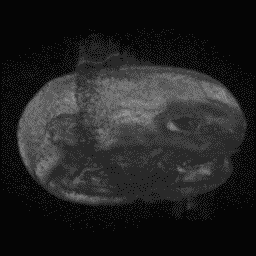
Largest collaborative study of the brain to date
In the largest collaborative study of the brain to date, scientists using imaging technology at more than 100 centres worldwide have for the first time zeroed in on genes that they agree play a role in intelligence and memory.
Scientists working to understand the biology of brain function — and especially those using brain imaging, a blunt tool — have been badly stalled. But the new work, involving more than 200 scientists, lays out a strategy for breaking the logjam. The findings appear in a series of papers published online Sunday in the journal Nature Genetics.
“What’s really new here is this movement toward crowd-sourcing brain research,” said Paul Thompson, a professor of neurology at the University of California, Los Angeles, and senior author of one of the papers. “This is an example of social networking in science, and it gives us a power we have not had.”
The genes, which influence elements of brain size, may have subtle effects on how people think and behave, though many other factors, including education and general health, play a role in intelligence and could easily offset the effect of any single gene.
Still, size matters, in brain research at least as much as in brain function.
“I like this work a lot, because these guys finally did what needed to be done to take a real stab at merging imaging and genomics,” said Dr. Matthew W. State, a professor of psychiatry at Yale, who was not one of the collaborators.
Brain imaging studies are expensive and, as a result, far too small to reliably tease out the effects of common gene variations. These effects tend to be tiny, for one thing, and difficult to distinguish from the background “noise” of other influences. And brain imaging is notoriously noisy: Not only does overall brain size vary from person to person, for instance, but so do the sizes of specialized brain regions like the hippocampus, which is critical for memory formation.
To solve the numbers problem, Thompson and three geneticists — Nick Martin and Margaret Wright, both of the Queensland Institute of Medical Research in Australia, and Barbara Franke of the Radboud University Nijmegen Medical Center in the Netherlands — persuaded research centres around the world to pool their resources and create one large database. It included genetic and extensive brain imaging results from 21,000 people. The team then analyzed the collective data to see whether any genes were linked to size, the most basic brain measure of all. As the study was being completed, the Thompson group learned that another consortium, led by Boston University researchers, was doing a similar analysis using its own large group.
The two teams’ findings did not completely line up. One found size-related genes that the other did not. But they agreed on two findings: one gene that correlated strongly with overall brain size, and another that correlated with the rate at which the hippocampus atrophies, or shrinks, with age.
People who carried one variant of the overall-size gene had brains that were about one per cent larger than those of people who carried another variant. The two variants are equally distributed — about half of people have one and half have the other.
via Guelph Mercury – Benedict Carey ᔥ
Bookmark this page for “brain research” and check back regularly as these articles update on a very frequent basis. The view is set to “news”. Try clicking on “video” and “2” for more articles.







